Shibuya strip show-adjacent extra-fatty beef bowl fails and succeeds in impressing us

Twice the price of a Yoshinoya beef bowl, but more than it seems.
Our Japanese-language reporter Seiji Nakazawa recently moved to Tokyo’s Shibuya district. Even though he’s been living in the capital for several years, Seiji hadn’t spent much time in Shibuya before finding his new apartment, so since settling in he’s been exploring the neighborhood.
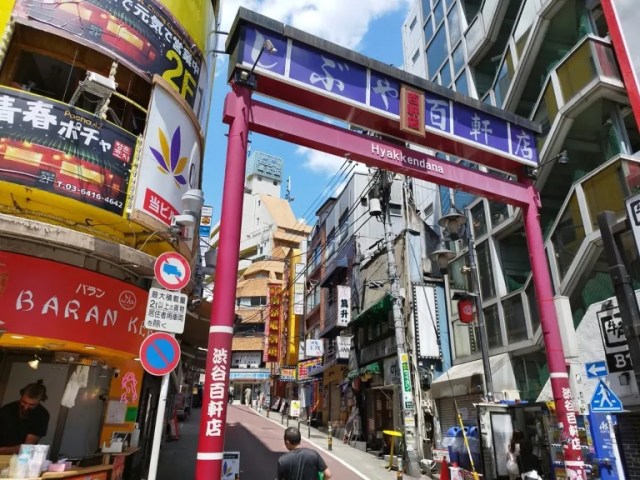
Though there aren’t any parts of Tokyo that would be considered straight-up dangerous by most other countries’ standards, Shibuya’s backstreets do have a bit of a sketchy reputation, so Seiji’s been doing most of his exploration during the day. For instance, at nighttime he’d probably have avoided this street with the Dotonbori Gekijo strip show theater on it…

…but strolling past it in the afternoon sunlight, he found something equally eye-catching right next door.

Between the strip theater and a ramen joint on the corner is Niku Dress, also known as Meat Dress. It’s a restaurant that specializes in donburi (rice bowls), and out front they had a sign touting their gyudon, or beef bowls.
The one that grabbed Seiji’s attention? The aburami gyudon, a beef bowl made with not just kuroge wagyu beef, but fatty kuroge wagyu beef.
▼ Niku Dress’ full official name for the dish is “rice bowl topped with simmered fatty Japanese beef, onions, and ginger.”

An ironic part of Japanese food culture is that since most dishes aren’t particularly fatty, the ones that are can sometimes be quite unabashed about it. With steak in particular, marbled beef with plenty of fat is often considered the most flavorfully gourmet, but this was the first time Seiji had seen a humble beef bowl bragging about its fat content.
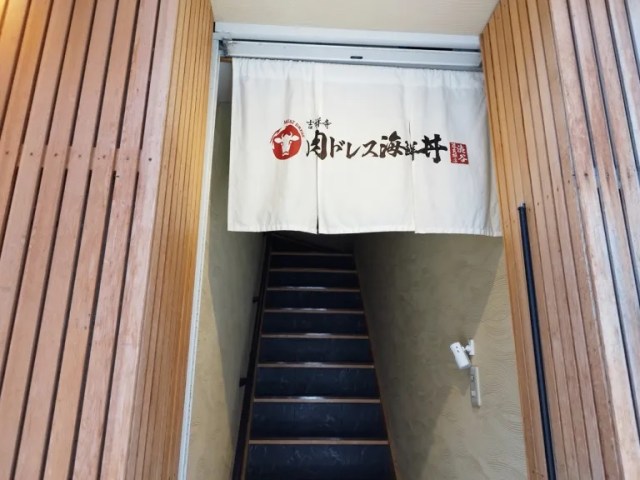
Curious to know (and eat) more, Seiji headed up the stairs to the restaurant’s entrance.
▼ The menu is bilingual, making ordering a snap even if you can’t read/speak Japanese.
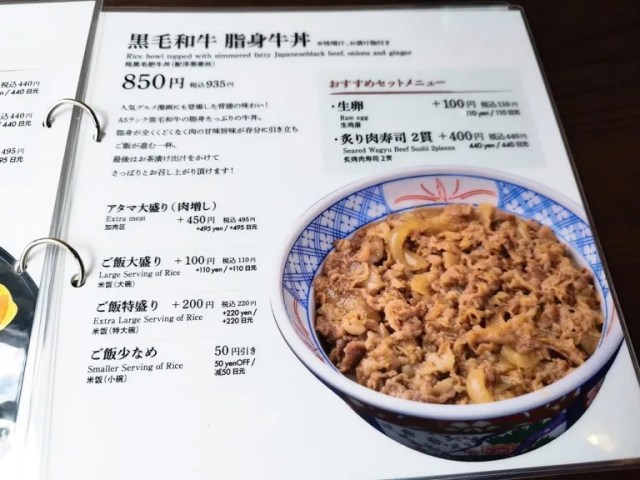
You can customize your order with things like raw egg or extra rice, but Seiji opted for the standard version of the fatty beef bowl, which is priced at 935 yen (US$6.10). That’s honestly on the high side for gyudon, about double what you’d pay at Yoshinoya, but a kuroge wagyu meal for under 1,000 yen is also a pretty good deal, and it comes with miso soup and pickles.
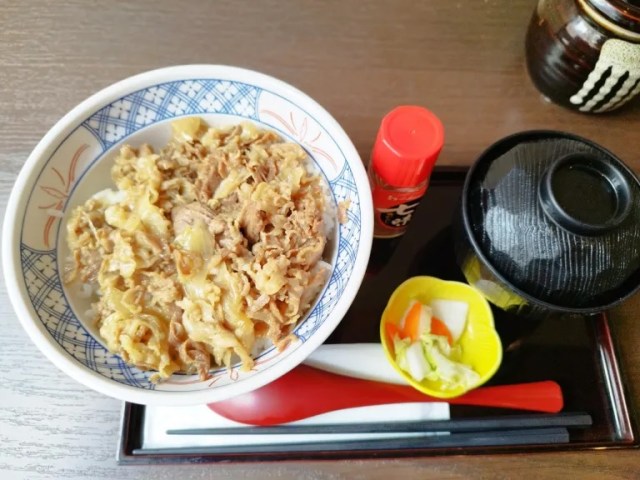
Appearance-wise, the fatty gyudon didn’t look all that different from the beef bowls you can get at any major chain, aside from the meat being lighter in color.

Leaning in for a closer look, though, Seiji noticed that the fatty gyudon’s meat is cut into smaller strips than usual. It’s a sign that Niku Dress uses only the especially fatty cuts from the meat, and Seiji got the sense that a lot of care goes into making the dish.
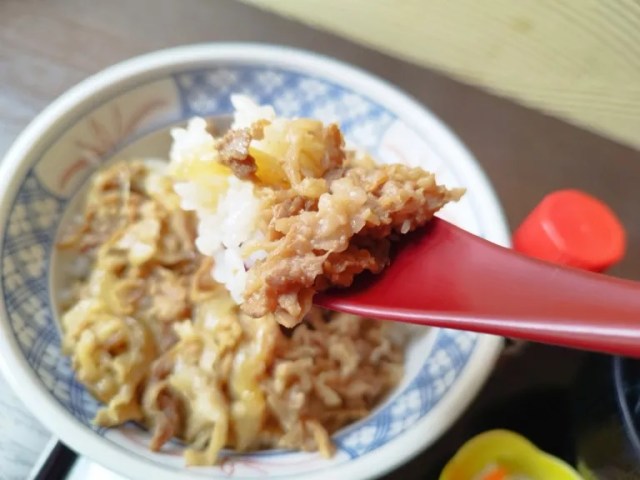
Of course, all the care in the world wouldn’t matter if it tasted bad. So Seiji took a bite and…
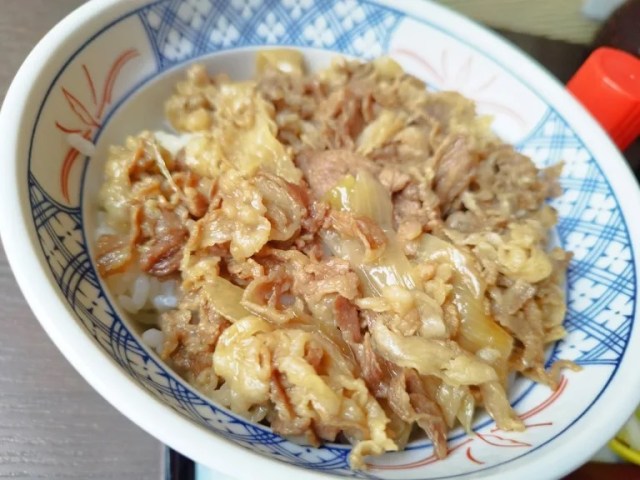
…yeah, it was good. Here’s the thing, though: gyudon is almost always good. Despite how cheap most beef bowls are in Japan, gyudon is amazingly consistent in terms of quality, and while this fatty one was tasty, it didn’t immediately strike Seiji as anything all that special. Still, he couldn’t complain, and he left the restaurant feeling satisfied.
Later that day, though, Seiji happened to come upon a Yoshinoya branch.

As loyal readers know, we have a very full professional eating-stuff calendar here at SoraNew24. Because of that, Seiji realized that it’s been a while since he’d eaten a Yoshinoya gyudon, the baseline by which all other beef bowls in Japan are judged. With his memory of Yoshinoya’s exact flavor feeling a little hazy, he decided it was time to reacquaint his taste buds with it, so he stepped inside and ordered a gyudon.

At 468 yen, it was cheaper then Niku Dress’ fatty gyudon, but when he took a taste, he found out that the price wasn’t the only difference between them. After having eaten the fatty gyudon, Yoshinoya’s meat felt surprisingly sinewy, and Seiji also was more aware of how much of Yoshinoya’s flavor comes from the broth it’s simmered in. On the other hand, the fatty gyudon had had a meltier texture with more of the sweet notes of its flavor profile coming from the meat itself. What’s more, by using less broth, the rice in Niku Dress’ fatty gyudon keeps more of its consistency and flavor too.
▼ Yoshinoya

▼ Niku Dress fatty gyudon

So, oddly enough, Seiji found his appreciation for the fatty gyudon rapidly rising after eating his next, non-fatty beef bowl. We guess you could say that makes the fatty one a dish for fans who eat gyudon regularly enough to have developed a thoroughly cultured palate for it, since it shines brightest on the taste buds of those who can detect the subtle differences that set it apart.
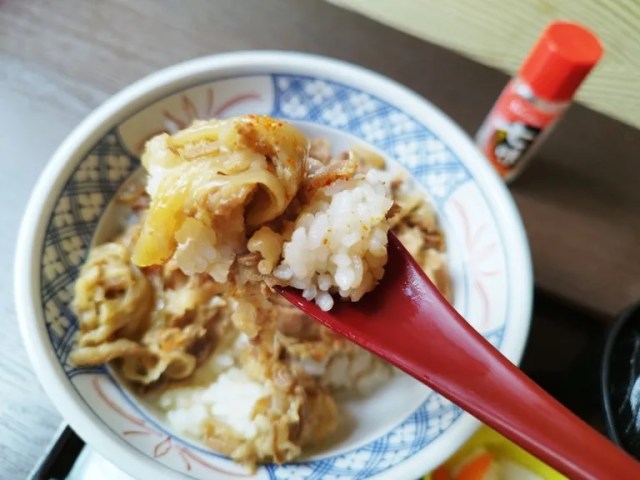
Immediately after eating the fatty beef bowl, if you’d asked Seiji whether he saw a return trip to Niku Dress in his future, he wouldn’t have been sure. Now though, he could definitely see himself going back, so if you spot him walking around near the strip theater, remember that he’s just there for the beef.
Restaurant information
Kichijoji Niku Dress Kaisendon (Shibuya Dogenzaka branch) / 吉祥寺 肉ドレス海鮮丼(渋谷道玄坂店)
Address: Tokyo-to, Shibuya-ku, Dogenzaka 2-28-27, Shoichi Building 2nd floor
住所 東京都渋谷区道玄坂2-28-7 翔壱ビル2F
Open 11 a.m.-3 p.m., 4 p.m.-9 p.m.
Photos ©SoraNews24
● Want to hear about SoraNews24’s latest articles as soon as they’re published? Follow us on Facebook and Twitter!
Credit:




0 comments: